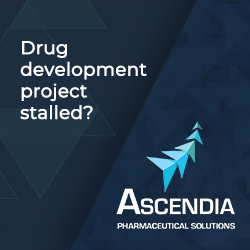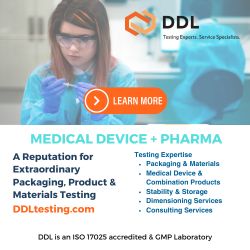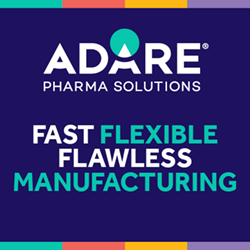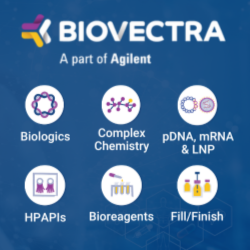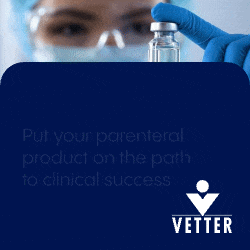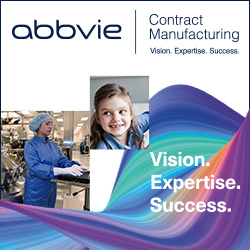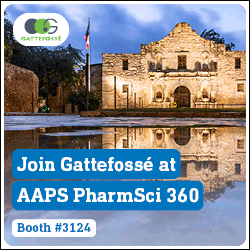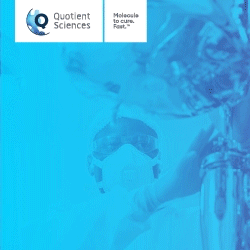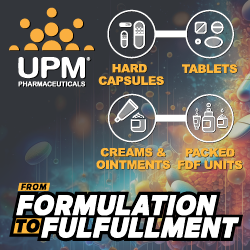Issue:January/February 2025
OUTSOURCING PHARMA DEVELOPMENT - Harnessing CDMOs for Innovation & Efficiency
 INTRODUCTION
INTRODUCTION
The global pharmaceutical industry is evolving rapidly with continuous new therapeutic modalities and manufacturing technologies in development. Progress has transformed patient outcomes by facilitating access to much needed treatment options across diverse therapeutic areas. This progress brings opportunities and challenges for developers.
Most notably, increased demand for innovative pharmaceuticals has required focus on maximizing drug development efficiency and cost-effectiveness. Developers must also navigate the ever-evolving regulatory landscape and ensure consistent manufacturing of safe, efficacious products at the scale required to meet global patient needs.
Contract development and manufacturing organizations (CDMOs) have become an integral part of the pharmaceutical industry by supporting developers to manage the growing intricacies of process development throughout the drug lifecycle.1 CDMOs offer specialized services and technologies to solve the challenges of complex development and manufacturing projects from early drug development stages through to scale up. They excel in facilitating efficient and cost-effective project delivery, supplying integrated end-to-end capabilities and providing dedicated expertise, which all reduce time to market and ensure continuous high quality.
INCREASING ACTIVE PHARMACEUTICAL INGREDIENT (API) COMPLEXITY
The demand for novel pharmaceuticals has grown across the industry to reach more medical indications with high specificity and efficacy. While this delivers significant benefits for patients, it presents a new challenge for developers – increased API complexity.
For example, more complex API molecules with higher molecular weights and more chiral centers are increasingly popular drug candidates due to their improved stereoselectivity, enhanced target specificity, and increased drug activity. However, these same molecular characteristics can tend toward poor solubility and bioavailability. Challenges are further compounded by the continued preference for solid dose forms which require developers to overcome inherently low absorption of these complex APIs within the gastrointestinal tract.2
Alongside chemically complex APIs, highly potent APIs (HPAPIs) are also growing, especially in the development of antibody-drug conjugates (ADCs). ADCs consist of a monoclonal antibody attached to a cytotoxic HPAPI via a chemical linker. The antibody delivery mechanism targets specific cancer cells for drug release, which helps to increase efficacy and reduce the side effects of conventional chemotherapy. This therapeutic advancement involves careful management of HPAPIs, as they present additional safety and regulatory challenges compared to traditional APIs due to their high toxicity.3
These trends have led to a significant paradigm shift in the development process. To mitigate the challenges associated with more complex and potent APIs, developers are looking to utilize advanced delivery systems and state-of-the-art engineering techniques. Niche, complex drug substances and forms require specialized knowledge, equipment, and technologies that would require large investments for many developers to add to their core drug discovery and product management foci.
OVERCOMING API CHALLENGES WITH A CDMO
Many challenges can arise when developing and formulating therapeutics with complex APIs. CDMOs’ specific capabilities and expertise help developers successfully overcome formulation difficulties and may be demonstrated by exploring three challenge areas and their solutions through CDMO expertise and capabilities: (1) improved physiochemical properties through solid form selection, (2) increased stability, solubility, and bioavailability through particle engineering, and (3) safe and effective handling of potent compounds through established expertise and infrastructure.
Solid Form Selection
One of the primary challenges during the early stages of API development is identifying the optimal crystalline structure of the drug compound. Different crystalline/polymorphic forms often exhibit different physiochemical properties. Solid form selection represents a key opportunity to optimize drug performance.
The importance of crystalline form is underscored by the regulatory requirement for polymorph assessment to validate the final drug product stability, efficacy, and safety for patients. Notably, solid form selection and control reduces off-target activity caused by interactions of different polymorphic forms of the drug compound within the body. The polymorphic form also influences the yield and purity of the active drug substance as well as formulation options for the final drug product. The latter is especially vital to optimize pharmacokinetic properties such as absorption.4
CDMOs can provide a wide range of services to help accelerate solid form selection, ensure consistent manufacture of the optimal form, and maintain regulatory compliance. This includes offering specialized skills and state-of-the-art equipment to leverage advanced screening techniques such as single-crystal x-ray diffraction (SCXRD). Specific chiral screening services can also be provided to support developers working with chiral APIs and intermediates.
Many CDMOs also offer additional testing capabilities to help developers identify further opportunities for enhancing physical properties of their compound. Using techniques such as salt and co-crystal screening, CDMOs can provide tailored recommendations to help improve solubility, bioavailability, stability, and purity, which supports the development of an optimized drug product.
Particle Engineering
Optimizing the physical properties of complex drug compounds may also challenge API development. By enabling the formulation of compounds into forms with more favorable shapes, sizes, and surface areas, particle engineering can enhance solubility, stability, and bioavailability.
It is key to optimize the physical properties of complex compounds as early as possible in the development process. Progressing compounds with poor solubility, instability, or low bioavailability can result in considerable additional work to overcome these deficiencies. If physical properties are optimized later in the development process, the costs can increase and ultimately delay commercialization.5 Taking a proactive approach has become a priority for developers. However, the knowledge and technical capabilities required can present a high barrier to entry.
For instance, creating an amorphous solid dispersion (ASD) using a polymer matrix is a popular approach to increase solubility and bioavailability. ASD requires consideration of many interacting variables, which requires extensive experience and knowledge for its successful use. Developers need to ensure that the overall physical stability of the drug is not negatively impacted. This involves having the expertise to identify, screen, and validate a suitable polymer that delivers the required drug properties and scales to an optimized large-scale production process.6 Likewise, for developers looking to reduce the physical particle size of their APIs, identifying the optimal particle size can be difficult without previous experience within this area.
In addition to characteristic selection, ascertaining the best manufacturing approach to achieve the desired physical and functional properties of the drug compound can present difficulties. Spray drying and hot melt extrusion have emerged as effective options for ASD development.7 Similarly, for developers looking to achieve sub-micron particle sizes, promising options include state-of-the-art approaches like nano-milling and high-pressure homogenization.8 Each of these techniques require specialized equipment. Therefore, without considerable investment, developers can struggle to independently implement these technologies in their development and manufacturing workflows.
Working with a CDMO with particle engineering experience can help developers find the optimal solution for their API’s physical properties. As a long-term manufacturing partner, a CDMO can enable developers to reap the benefits of advanced particle engineering techniques without the need for costly additional equipment or time-consuming in-house training.
Handling Potent Ingredients
For developers working in the field of personalized medicine, ADCs offer considerable opportunities to innovate new, targeted therapies for a range of different types of cancer, but working with ADCs and their HPAPI constituents requires the utmost care and specific experience with relevant regulations, analytical techniques, separations, and complex chemistry.
HPAPIs need to be carefully managed throughout the entire process lifecycle of ADC manufacturing to ensure safety for manufacturing staff and patients.9 This includes building specialized containment infrastructure that often requires significant investment. Additionally, regulatory bodies are increasingly focused on ADC manufacturing process optimization to ensure consistent quality.10 As a result, working with a CDMO that is equipped to safely handle HPAPIs and manufacture consistent ADCs can help developers to reduce overall costs and ensure regulatory compliance.
ADCs are multi-component therapeutics, and their development can present unique complications. A complex part of an ADC’s design is the linker molecule, which must maintain stability during preparation, storage, and systemic circulation. Then, it must release the HPAPI at the specific target site within the body. In addition, accurately characterizing these therapeutics is difficult, because it requires combining several analytical, biochemical, and biophysical techniques.11 Within this area, chromatography expertise and capacity are especially valuable to support developers in accurate compound characterization and effective ADC purification.
CHOOSING A CDMO TO SUPPORT SUCCESS
A strategic partnership with a trusted CDMO can provide many benefits ranging from experts’ insights to state-of-the-art equipment. However, there are several considerations that developers should evaluate prior to engaging with a CDMO to maximize their partnership.
Developers must carefully assess the need for a CDMO partner before commencing their project. Early involvement of a CDMO ensures valuable partnered input into the planned development approach. Leveraging a CDMO’s expertise at an early stage can significantly reduce the risk of unforeseen challenges and associated costly delays arising down the line.
Developers need to choose a CDMO that is capable and adept at the unique requirements of their project. The CDMO should have specific expertise and proprietary technology to support particularly complex areas of development such as solid form selection, particle engineering, and highly potent API handling. To maximize confidence, developers should search for CDMOs with capabilities in these areas and a proven track record of successful project delivery and quality.
In addition to the CDMO’s development capabilities, developers should evaluate its technology transfer approach to ensure streamlined project delivery. Knowledge and technologies need to be shared at multiple phases of the development process and throughout the product lifecycle. Due to the complexity of pharmaceutical manufacturing, close collaboration between process engineering and development, analytical chemistry, quality, and production teams is essential at every stage. Choosing a CDMO with a well-defined technology transfer approach that is managed by an experienced, multi-disciplinary team is essential to ensure efficient scale-up and support long-term success.
The capacity and regional capabilities of the prospective CDMO should also be considered. Working with a CDMO that has a network of sites offering specific capabilities with established technology transfer processes between them, ensures developers can access specialized support in line with their needs. Moreover, with multiple sites, developers can be confident that the CDMO has the bandwidth to provide dedicated and responsive service at every stage of the development and manufacturing process.
While evaluating a CDMO’s experience and capabilities should be a priority, the importance of aligned working practices should not be overlooked. For example, developers should ensure that the CDMO can provide an integrated project management approach. This approach facilitates the CDMO to work seamlessly with the developer’s internal team. Evidence of the CDMO’s commitment to collaboration, transparency, and clear communication can reassure developers that they are working towards a shared goal with a dependable partner.
MANAGING COMPLEXITY WITH CONFIDENCE: THE NEED FOR OUTSOURCING
As innovation continues across the pharmaceutical industry, developers must keep pace with new technologies, emerging research, and evolving regulations. However, with many companies managing short timelines, tight budgets, and limited internal bandwidth, this can be difficult.
CDMOs offer specialized expertise and advanced technical capabilities to support developers on the growing complexities of drug development. Developers that partner with a CDMO successfully and cost-effectively navigate the challenges of innovative pharmaceuticals development. Moreover, with CDMOs increasingly offering agile and specialized services, developers can receive targeted, expert support to help overcome specific development challenges, from particle engineering to HPAPI handling.
Ultimately, by partnering with a trusted CDMO, developers can confidently embrace innovation, overcome development challenges, and accelerate commercialization to drive the delivery of life-saving treatments to the patients who need them.
REFERENCES
- CPHI Online. Global CDMO Trends: the 2024 outsourcing forecast. https://www.cphi.com/content/dam/esa/hn/cphi/en/brochures/CPHI-trend-report-outsourcing-trends-and-strategies.pdf. Published April 2024. Accessed June 27, 2024
- Thomas F. Adapting to Solubility/Bioavailability Challenges. Pharmaceutical Technology 2022; 46(8). https://www.pharmtech.com/view/adapting-to-solubility-bioavailability-challenges
- Hotha K. Antibody-Drug Conjugates (ADCs): Navigating Four Pillars of Safety, Development, Supply Chain and Manufacturing Excellence. Advances in Chemical Engineering and Science 2023; 13(4): 351–362. https://doi.org/10.4236/aces.2023.134024
- Censi R, Di Martino, P. Polymorph Impact on the Bioavailability and Stability of Poorly Soluble Drugs. Molecules 2015; 20(10): 18759–18776. https://doi.org/10.3390%2Fmolecules201018759
- Kanaujia P, Poovizhi P, Ng WK, Tan RBH. Amorphous formulations for dissolution and bioavailability enhancement of poorly soluble APIs. Powder Technology 2015; 258: 2–15. https://doi.org/10.1016/j.powtec.2015.05.012
- Thayyil RA, Juturu T, Nayak S, Kamath S. Pharmaceutical Co-Crystallization: Regulatory Aspects, Design, Characterization, and Applications. Advanced Pharmaceutical Bulletin 2020; 10(2): 203–212.
- https://doi.org/10.34172%2Fapb.2020.024 7. Bhujbal SV, Mitra B, Jain U, et al. Pharmaceutical amorphous solid dispersion: A review of manufacturing strategies. Acta Pharmaceutica Sinica B 2021; 11(8): 2505–2536. https://doi.org/10.1016%2Fj.apsb.2021.05.014.
- Pardhi V, Lanke TV. Nanocrystals: An Overview of Fabrication, Characterization and Therapeutic Applications in Drug Delivery. Current Pharmaceutical Design 2019; 25(43): 5129–5146. http://dx.doi.org/10.2174/1381612825666190215121148.
- Dunny E, O’Connor I, Bones J. Containment challenges in HPAPI manufacture for ADC generation. Drug Discovery Today 2017; 22(6): 947–951. https://doi.org/10.1016/j.drudis.2017.02.003.
- Bechtold-Peters K, Ruggiero A, Vriezen N. CMC Regulatory Considerations for Antibody-Drug Conjugates. Journal of Pharmaceutical Sciences 2023; 112(12): 2965–2980. https://doi.org/10.1016/j.xphs.2023.09.007.
- Wagh A, Song H, Zeng M, et al. Challenges and new frontiers in analytical characterization of antibody-drug conjugates. MAbs 2018; 10(2): 222–243. https://doi.org/10.1080%2F19420862.2017.1412025.

Dr. Rohtash Kumar joined Veranova as SVP, Development Operations and Chief Technical Officer in May 2023. He brings deep experience in the CDMO industry, leading technical teams engaged in the discovery and development of new products for use in clinical trials, as well as successfully running programs for commercial supply of APIs in the branded market. Prior to joining Veranova, he served as Site Head at Bachem Americas Inc., where he worked for 8 years holding different positions including VP of API Manufacturing. Prior to Bachem, he worked with Sigma-Aldrich as Manager of R&D and Manufacturing. In the early part of his career, Rohtash worked at Toronto Research Chemicals as a Group Leader, and at Apotex as Senior Research Scientist. He earned his PhD in Organic Chemistry from Delhi University, and an MBA – Production Management from Chaudhary Charan Singh University. He completed post-doctoral work at the University of Alberta, and at the National Research Council of Canada.
Total Page Views: 3025





